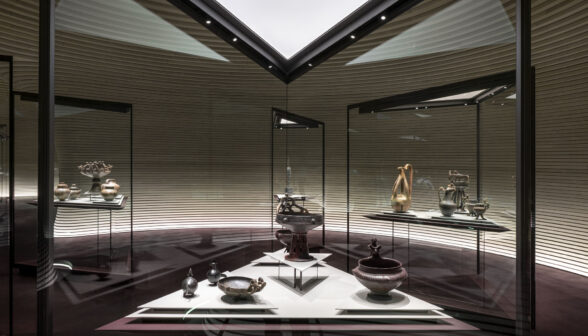Museo d'arte
Fondazione Luigi Rovati
Image © Giovanni de Sandre
Milan, Italy
2022
Goppion is proud to have contributed Fondazione Luigi Rovati’s new Museum of art, producing the showcases that house important artifacts of the Etruscan collection.
Units
27
Designed by architect Mario Cucinella, with the support of our “design assist” engineering program, these 27 showcases are all high-performance and conservation grade, to best protect the delicate objects. Thirteen of these are island showcases with a square base and a system of adjustable shelves by means of racks, and the other fourteen are triangular-base island case with an inclined glass top; the objects are placed on metal tables supported by vertical glass blades.



The particular, innovative shape of these showcases is intended to reduce the distance between the visitor and the works on display, encouraging their dialogue with the architecture of the rooms. It is also intended to break the traditional pattern of museum 'box' showcases by experimenting with new forms (let us remember Carlo Scarpa's famous drawing "skyscrapers would make landscape... if they looked like this?").
All the showcases are equipped with autonomous lighting: in the showcases with a square base, the glass tops’ perimeter is equipped with mini LED spots, and in those with a triangular base, by way of a perimeter of mini LED spots and light panel in the top.



Finally, Goppion also made the metal plinth with reinforced structure to support Luna marble columns depicting a funeral scene.
The challenges we faced and overcame in the long process of co-design, engineering and construction of the exhibit were remarkable. The original and innovative design of the showcases required a design assist process of more than nine months. In fact, the irregular shape of the showcases and the need to equip the interior tables with minimal supports involved careful structural studies. The adaptation of the lighting apparatus to Goppion's building systems was equally as delicate. Also, the miniaturization of the technical compartments housed in the showcase plinth were complex and had to be reduced to a minimum to meet the exhibit designer's requirements.
Finally, special attention was paid to defining colors and custom finishes that would meet the refined design requirements.


